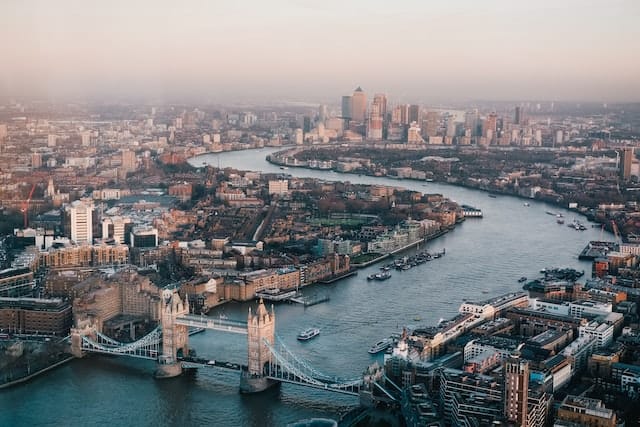London’s museums are magnificent portals to the past. Extraordinarily rich treasure troves, they’re warm and welcoming on a rainy day, cool and comforting when the weather’s hot outside. And perfect for whiling away the hours in between. With over 170 museums (and counting) located throughout the capital, it can be hard to choose.
Here at Window Seat, we’re aficionados of the genre. And we’re about to walk you through our favorite museums with hints and tips on how to get there and what to see. All of the museums are easily reached via public transport and many of them feature bike racks and Santander Cycle docking stations – just check ahead online.
Traveling with kids? In London, there’s absolutely no reason to avoid the museums. In fact, the best museums in London are totally geared toward entertaining the little ones. We’ll include details of the best for families. Here’s our pick of London’s can’t miss museums, plus a scattering of smaller gems you might not have heard of.
THE BRITISH MUSEUM
Founded in 1753, the British Museum covers two million years of history. The world’s first public museum of its kind, it attracts more than six million visitors each year. And with eight million items, its collection is nothing less than one of the largest and most comprehensive on earth. In essence, this mammoth museum documents the story of human culture, from its beginnings to the present day.
You’ll pay nothing to see the permanent collections housed in around 60 galleries, where just a few of the highlights include an unforgettable gallery of Egyptian mummies, the Rosetta Stone and the Parthenon sculptures. You’ll need to pay extra to see the museum’s exciting temporary exhibitions and events.
The breathtaking Great Court is the largest covered public square in Europe and a destination in its own right. Designed by Foster and Partners, the courtyard was transformed into a light-filled, two-acre space with a spectacular glass and steel roof, with the famous circular Reading Room at its center.
The main entrance to the British Museum is located on Great Russell Street, in Bloomsbury. The museum is wonderfully central and closest to Russell Square and Tottenham Court Road Tube stations, with Goodge Street and Holborn also good options. Lots of London bus lines stop close by, including numbers 14, 168, 176, 19, 24, 38, 68, 8 and 98 (route 14 stops directly outside).
DENNIS SEVERS’ HOUSE
For something completely different, try this extraordinary museum house in Spitalfields, near Liverpool Street Tube and railway station. It’s one of the best small museums in London. Take a short walk towards Old Spitalfields Market, then on to number 18 Folgate Street, a Georgian terraced house built in 1724. Bus numbers 26, 35, 68, 205 and 243 pass close by.
Inside, you’ll encounter a candle-lit “still-life drama” created by American Anglophile Dennis Severs, who owned and lived in the five-story house until his death. He described it as a “historical imagination” of what life would have been like for a family of 18th- and 19th-century Huguenot silk weavers. Prepare to be transported – via all of your senses – to the daily lives of a past age.
Part museum, part still life, part time machine, this dark and dreamlike installation never fails to impress. Far from a modern-day immersive walkthrough, this is a dusty space where the visitor surrenders to nothing more than atmosphere and suggestion – and that makes it all the more powerful.
An actor provides the entertaining focus, heading up a tour of each floor that ends in the years just before WWI. Magical, mysterious and definitely not one for the kids, there’s nothing else like it in London. Buy tickets online, you’ll love it!
TATE MODERN
In the best museum in London stakes, Tate Modern is unquestionably one of the heavy hitters. A colossus of modern art, it was created when the new gallery emerged from Bankside power station. It’s been a huge presence on the southern bank of the Thames ever since.
Tate Modern is hugely accessible with lots of different public transport routes nearby. Bus routes 40, 63, 100, 381 and 344 all stop within walking distance, while Southwark is the nearest Tube station (Jubilee Line).
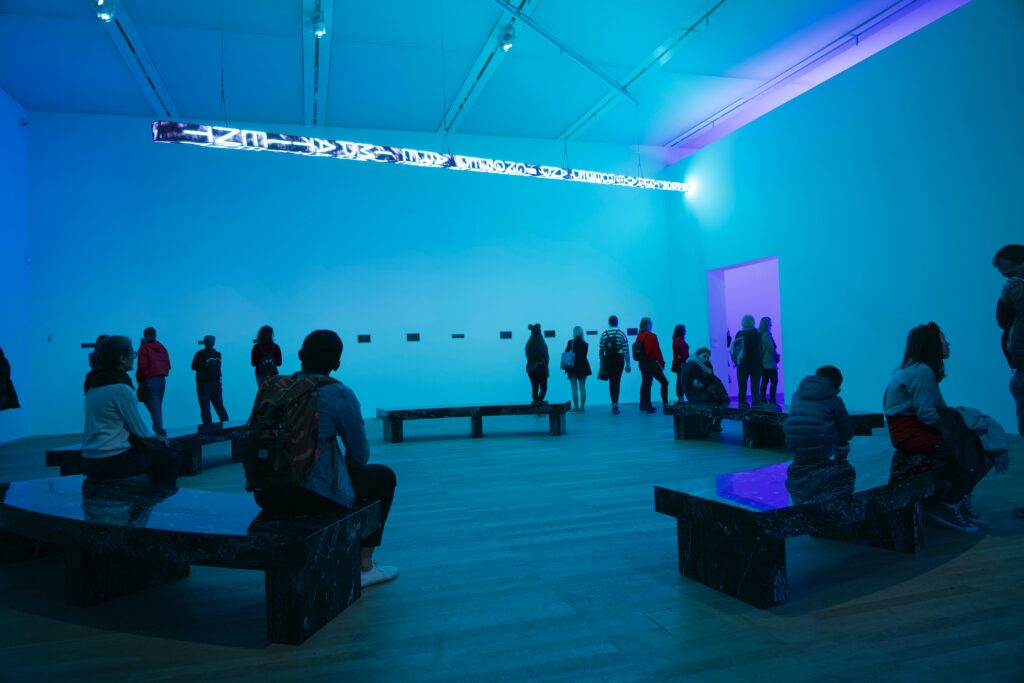
You can also reach Tate Modern by boat, if you take a Thames Clipper to Bankside Pier. Their Tate to Tate – RB2 service offers rapid transit to the Tate Britain, Tate Modern’s sister gallery on the Thames in Vauxhall. The boat service runs between the two every half hour, allowing for a wonderfully rich day exploring the two museums and their environs.
Tate Britain holds the largest collection of British art from the 16th to the 20th century, alongside major temporary exhibitions focusing on specific artists or art movements.
Large and imposing, Tate Modern’s most famous feature is the Turbine Hall, the sloping floor taking you down into the depths of the gallery and then back up towards the light. Alongside its permanent collection (free to enter), Tate Modern presents several large temporary shows each year, plus smaller scale projects in and around the gallery.
The Tate Modern Viewing Level sits at the top of the museum’s new extension, to the rear of the building. It delivers magnificent panoramic views across the Millennium Bridge, past the City of London School for Boys and on to St. Paul’s Cathedral in the distance.
Kids will have a ball at Tate Modern with digital sketchpads, interactive displays and a friendly, relaxed atmosphere that welcomes babies in the galleries.
SIR JOHN SOANE’S MUSEUM
Lying quietly in a row of terraced houses in Holborn, the delightful Sir John Soane’s Museum is among the best museums in London. To reach 12 to 14 Lincoln’s Inn Fields, take the Tube to Holborn (Central and Piccadilly lines) for a five-minute walk to the house, or it’s a 15-minute walk from Temple (Circle and District lines). Buses 1, 59, 68, 91, 168, 171, 188, 243, 521 and X68 all stop on nearby Kingsway.
The son of a bricklayer, Soane became one of Britain’s leading 19th-century architects, and he designed the Bank of England. He developed three adjacent houses to form a building that is itself full of architectural surprises and illusions. In the large ground floor room, carefully placed mirrors create tricks with the light, while the basement is flooded with light from a glass dome built into the roof. Every room is filled with fascinating drawings and artifacts collected by Soane, while in the picture gallery, panels open to reveal more works of art behind them.
Open Wednesday to Sunday, 10 am to 5 pm, entry is free – book ahead if you’re keen to join a highlights tour. You can also buy tickets for themed talks and the gloriously atmospheric Soane “Lates” to explore the house by candlelight.
John Soane left his house of treasures to the nation in 1837, with the stipulation that nothing should ever be changed. His vision was to preserve his house as an academy of architecture, free to all. His wishes have been honored and today, you’re invited to marvel at this cornucopia of beautiful and beguiling objects from around the world.
THE WALLACE COLLECTION
Another unexpected delight, The Wallace Collection in Hertford House nestles quietly in a classic London square. Inside, you’ll find one of the finest private art collections in the world – and one of the top 10 museums in London. Large and airy, Hertford House dominates the north side of beautiful Manchester Square. It’s the former townhouse of the wealthy and aristocratic Seymour family – Marquesses of Hertford – and represents five generations of passionate art collectors.
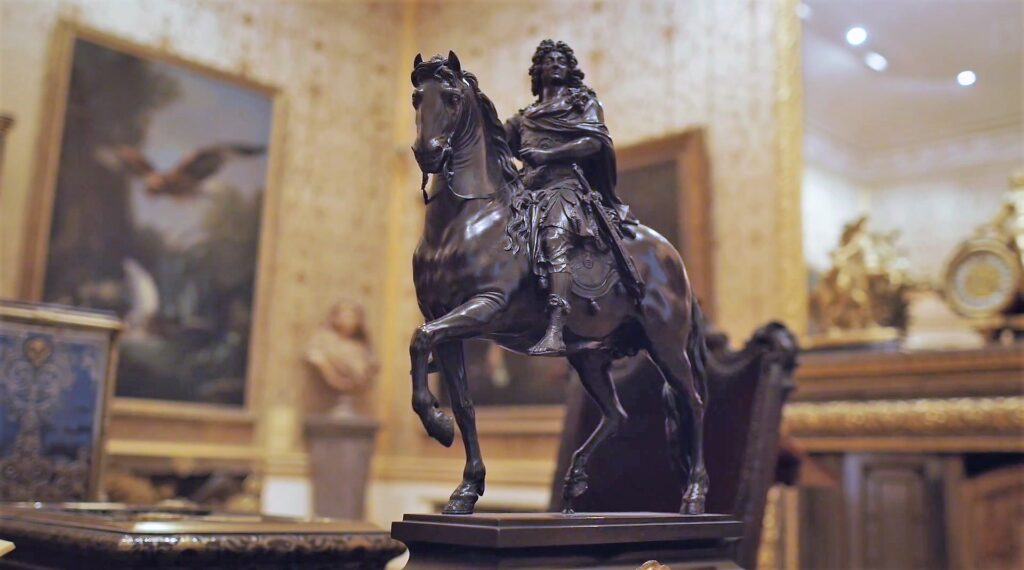
The collection is named after Sir Richard Wallace, whose widow Lady Wallace bequeathed the entire collection to the nation in 1897. The family stipulated that the collection – comprising around 5,500 works of art – would be permanently displayed, unchanged and without charge. Children are welcome.
A remarkable collection of 16th- to 19th-century French paintings and decorative arts lies at the heart of the Wallace Collection. It includes masterpieces by artists such as Canaletto, Rembrandt, Rubens, Titian, Van Dyck, Gainsborough, Delacroix, Velázquez and Vigée Le Brun. For example, The Laughing Cavalier (1624) is a priceless Baroque portrait by the Dutch Golden Age painter Frans Hals.
The collection also contains princely arms and armor, and medieval and Renaissance objects including enamels, majolica, glass and bronzes.
To reach the beautiful Manchester Square, the nearest Tube stations are Bond Street (Central and Jubilee lines) Baker Street (Bakerloo, Circle, Hammersmith and City, Jubilee and Metropolitan lines) and Oxford Circus (Bakerloo, Central, Victoria lines). Bus numbers 98, 55, 390 and 139 all stop close by.
Elegant and spacious, The Wallace Collection is a haven amid the frantic bustle of the city center. There’s even a French-style brasserie and drop-in café, located in the courtyard and protected from the elements by a glass roof.
There are lots of temporary themed events, tours, lectures and exhibitions, as well as drawing classes in the Learning Studio, plus hands-on sessions for the kids. It’s free to enter, seven days a week.
THE NATIONAL MARITIME MUSEUM
This magnificent building, dedicated to all things nautical, is located on Romney Road, SE10. Part of Royal Museums Greenwich, a network of museums in the Maritime Greenwich World Heritage Site, it’s perfect for a day out in this leafy enclave, where you can stroll in the park and visit the Greenwich Observatory. Nearest Tube stations are Greenwich and Maze Hill. You can also arrive here on the river via Thames Clipper.
The sea has always played a fundamental role in British history, and this museum celebrates that seafaring heritage. It’s a treasure trove of watery artefacts, maps, art and memorabilia. One of the star exhibits is Lord Horatio’s blood-stained uniform, worn at the Battle of Trafalgar in October 1805.
The museum is committed to creating a vibrant environment for families and children alike, offering a whole day’s worth of sea-themed activities. Creative costumes sessions, character encounters with actors and family trails all add to the fun. The AHOY! and All Hands! galleries cater specially for kids.
VICTORIA & ALBERT MUSEUM
The world’s largest museum of applied arts, decorative arts and design, the V&A was originally founded in 1852 as the Museum of Manufactures to inspire design students. It was renamed by Queen Victoria in 1899, in memory of her husband Prince Albert.
Today, seven miles of galleries are divided by theme – fashion, theater, furniture, architecture – spanning several hundred (if not thousand) years.
Through the decades, large-scale exhibitions focusing on individual designers or public figures, or specific art movements. In recent years, the V&A has acquired a rather glamorous reputation, particularly with the fashion crowd, with tickets for must-see shows sold out months in advance.
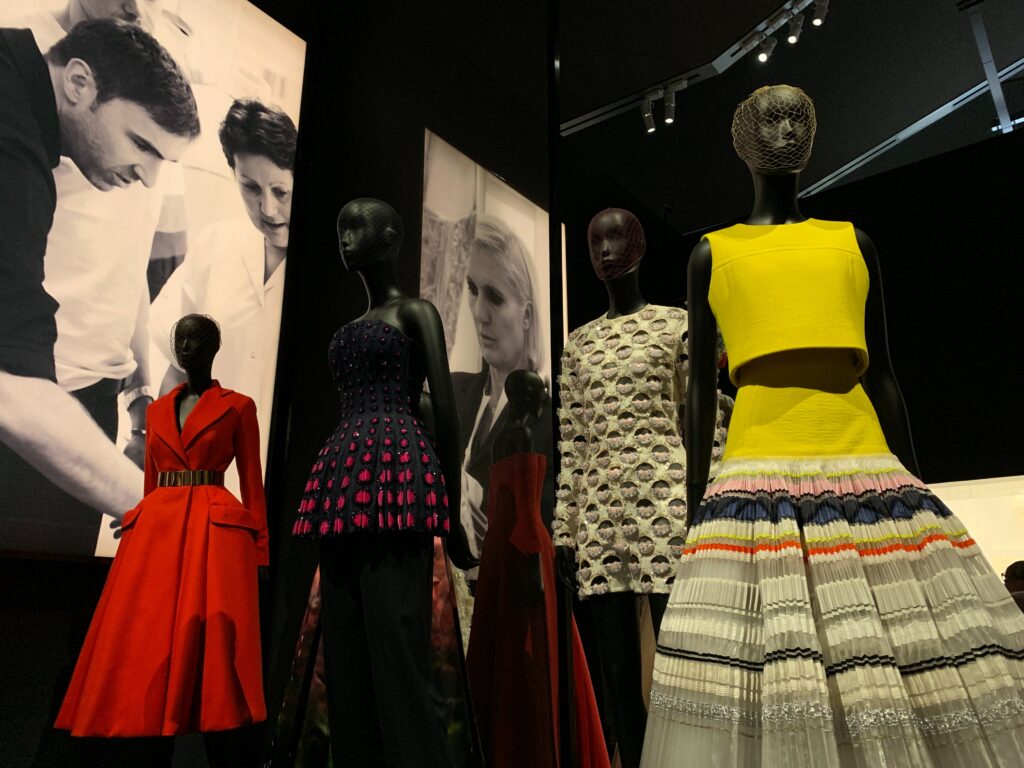
With such a wealth of treasures on offer, it’s easy to feel a little overwhelmed and head straight for the calming Garden Café. (The Main Café – the world’s oldest museum restaurant – is also divine, featuring gorgeously opulent original Victorian décor designed to reflect contemporary design theory.) Instead, why not try the very manageable V&A Trail? This showcases a selection of must-see museum objects, and as a carefully curated introduction to the V&A, you can’t beat it. All the objects are easily found on the first floor (Level 0) or Europe 1600–1815 galleries (Level -1).
The V&A is housed in a beautiful building in one of London’s most desirable neighborhoods – South Kensington. Spacious, tree-lined and very near the parks, the V&A offers a wonderfully refreshing day out. General admission is free, seven days a week. The Grand Entrance is on Cromwell Road, with the nearest underground stations South Kensington and Gloucester Road. The number 9 bus stops just outside.
THE NATURAL HISTORY MUSEUM
Another London stalwart and an unashamed crowd-pleaser, the Natural History Museum is just across the road from the V&A, next to the Science Museum. That makes a visit to three of the best museums in London the perfect idea for a day out in Kensington.
This is very much a distinguished place of current learning, too. Behind the scenes, specialist scientific staff conduct world-leading laboratory research. In turn, the library and archives contain a magnificent collection of natural history literature, artwork, photography and manuscripts.
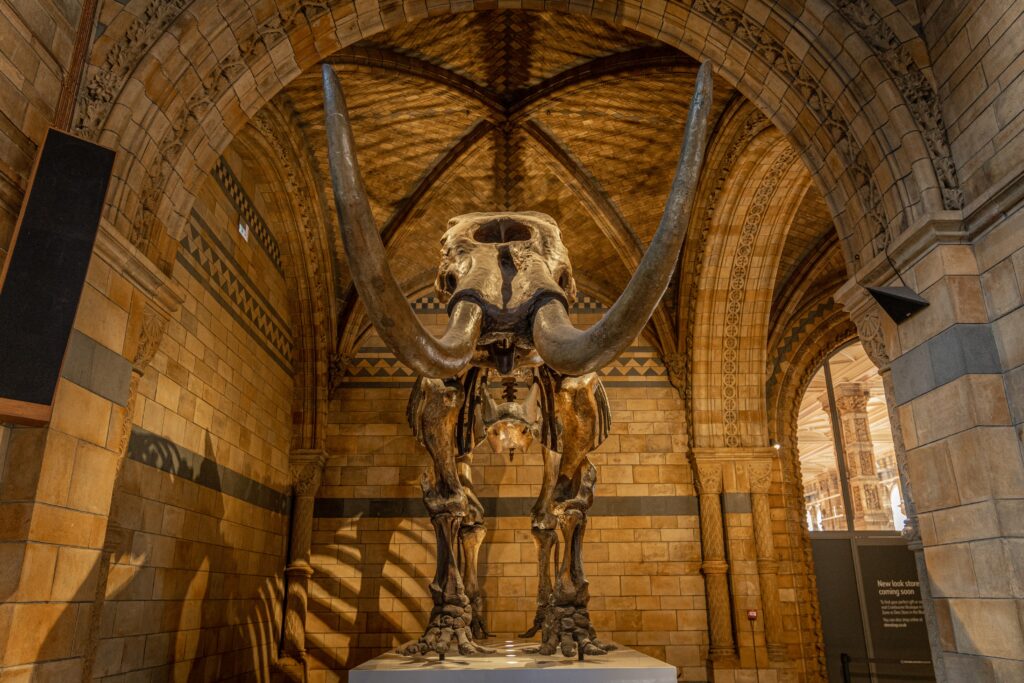
Inside, you’re greeted by Hope, the enormous skeleton of a blue whale, suspended high above you in the magnificent main hall. The sheer scope of objects on offer is mind-boggling, with 80 million items from land, sea and space, divided into five principal collections and numerous different zones. Together, the collections span 4.5 billion years, from the formation of the solar system to the present day.
A top favorite with children, the museum is home to the huge and charismatic T. rex, resident superstar among the museum’s stable of animatronic dinosaur models. Watch them lurch and roar in the Dinosaurs gallery, where fossilized skeletons and eggs are also on display. There’s also a butterfly house and even an outdoor wildlife garden.
Another one to add to the list of incredible free museums in London, the Natural History Museum is easily booked in advance. The main entrance is on Cromwell Road, with another on Exhibition Road. The nearest Tube station is South Kensington, about a five-minute walk from the Museum’s main entrance on Cromwell Road. Piccadilly, District and Circle line trains all stop at South Kensington: look out for a handy pedestrian tunnel that takes you straight to the museums on Exhibition Road. Bus numbers 133, 15, 21, 344, 43, 47 and 8 all stop nearby.
THE DESIGN MUSEUM
London’s Design Museum is housed in a Grade II listed landmark from the 1960s that formerly housed the Commonwealth Institute. It’s the world’s leading museum devoted to contemporary design in all of its forms, and it won the European Museum of the Year Award in 2018.
Designer Maker User is the museum’s permanent collection, showcasing iconic, groundbreaking items and big names from the worlds of fashion, architecture, engineering and digital. The ground floor showcases temporary exhibitions focusing on, for example, the sneaker as cultural symbol, a humanoid robot and electronic music (you’ll need to pay for these). There’s also an events and gallery space, a residency studio, a reference library and the Swarovski Foundation Centre for Learning.
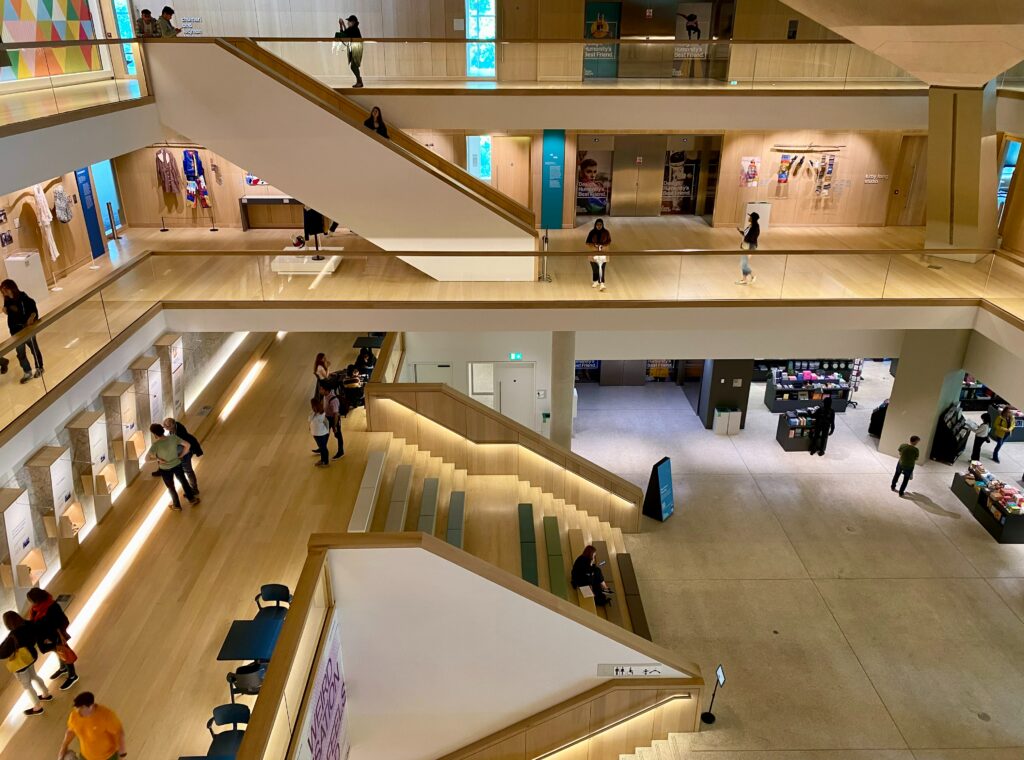
The Design Museum is yet another of the best museums in London that’s totally free to enter with no pre-booking required. Located at 224-238 Kensington High Street, the closest Tube station is High Street Kensington (Circle and District lines), a seven-minute walk. Kensington Olympia is the closest railway station, while bus numbers 27, 28, 328, 49 and 9 all stop nearby. The museum is right next to elegant Holland Park, sporting a café, woodland, peacocks and the serene Kyoto Garden.
THE MUSEUM OF THE HOME
For a fascinating look at British domestic history, look no further than the Museum of the Home. Located in trendy Shoreditch, the museum was recently redeveloped and caters beautifully for all ages. Installations and interactive displays add to the creative mix, providing a colorful and dynamic environment that’s a million miles away from a traditional “glass cabinet” museum model. Children are very welcome, and there are free family trail guides and sensory packs to help little ones engage with both house and gardens. There’s no café, but you can eat a picnic lunch in the lunchroom, and there’s a multitude of London eateries on the doorstep.
There are three key elements to the museum: Rooms Through Time, Home Galleries and Gardens Through Time. Rooms Through Time takes the form of a long corridor, from which the visitor views a series of faithfully reconstructed rooms, filled with the domestic accoutrements of centuries past. As you walk through, each room gives way to the next era, providing a touching and fascinating series of domestic tableaux that bring history warmly to life. The rooms finish at the present day.
For a delightful Christmas confection, visit Rooms Through Time in December, when each space gleams with the wintry seasonal decorations of different times, from Tudor holly and mistletoe to gaudy 1970s baubles. Carol-singers gather to sing outside a glittering Christmas tree on the museum’s front lawn. This seasonal treat is a long-standing favorite with schools and families across London.
The Home Galleries explore how we create, keep and exist in our homes, both now and in centuries past. It’s a fascinating chance to explore the very concept of “home”, the things we acquire to make and maintain one, and how these items reflect our taste and identity.
Outside, you can explore Gardens Through Time, where manicured lawns and carefully designed pocket gardens offer a glimpse of lives past, showing how city gardens developed over the years.
Like all the best museums in London, The Museum of the Home is absolutely free (the museum is a charity, so you can donate if you wish). It’s open Tuesday to Sunday (and bank holidays) 10 am to 5 pm, with last entry at 4 pm. Located at 136 Kingsland Road, the main entrance is opposite Hoxton Station London Overground station on Geffrye Street. Liverpool Street and Old Street Tube stations are also nearby, while buses 149, 242, 243 and 394 stop on Kingsland Road.
